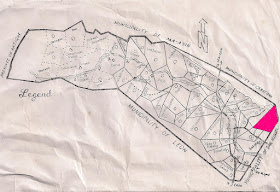Pianda-an Sur
Feast Day: October 3
Patron Saint: St. Therese of the Child Jesus
There are six household who were the pioneer residents in this place in 1870s led by Pido Ambid. In the 1880s there is a fierce battle between the Spaniards and the Katipuneros. In this place, the Spaniards ran after these Katipuneros and the caught a man too slow to run. The man shouted "Pi ang daan ko!" Since then they call the place "Piang da-an" which later became Pianda-an.
When the Americans came in the 1900s, Pianda-an was headed by Enrique Ambid. In this year a sugar mill was built. Someone stole the mill by two carabao pulling it. In 1920 processing of sugar cane stopped and people incur loses in their sugarcane crop. During the Japanese occupation in World War II, many people from the city evacuated to this place to hide from the enemy and returned home after liberation of Panay.
In 1946, Ricardo Hisugan was appointed as the Teniente del Barrio. During his term, the residents constructed a chapel and they celebrated the first fiesta in their barangay on October 3, 1946. The patron saint is St. Therese of the Child Jesus. The image of St. Therese was stolen in 1950 and it was never returned.
Quintin Anecita became the Teniente del Barrio in 1960 and Barangay Captain starting in 1964 when the church was transferred closer to thirty (30) households and also during this time when the first multi-purpose hall was completed. During the term of Captain Rogelio Tagurigan the church undergone some extensions and the electricity reach this barangay. During the term of Captain Burt Cortez, a new chapel was constructed which still stood until today.




















